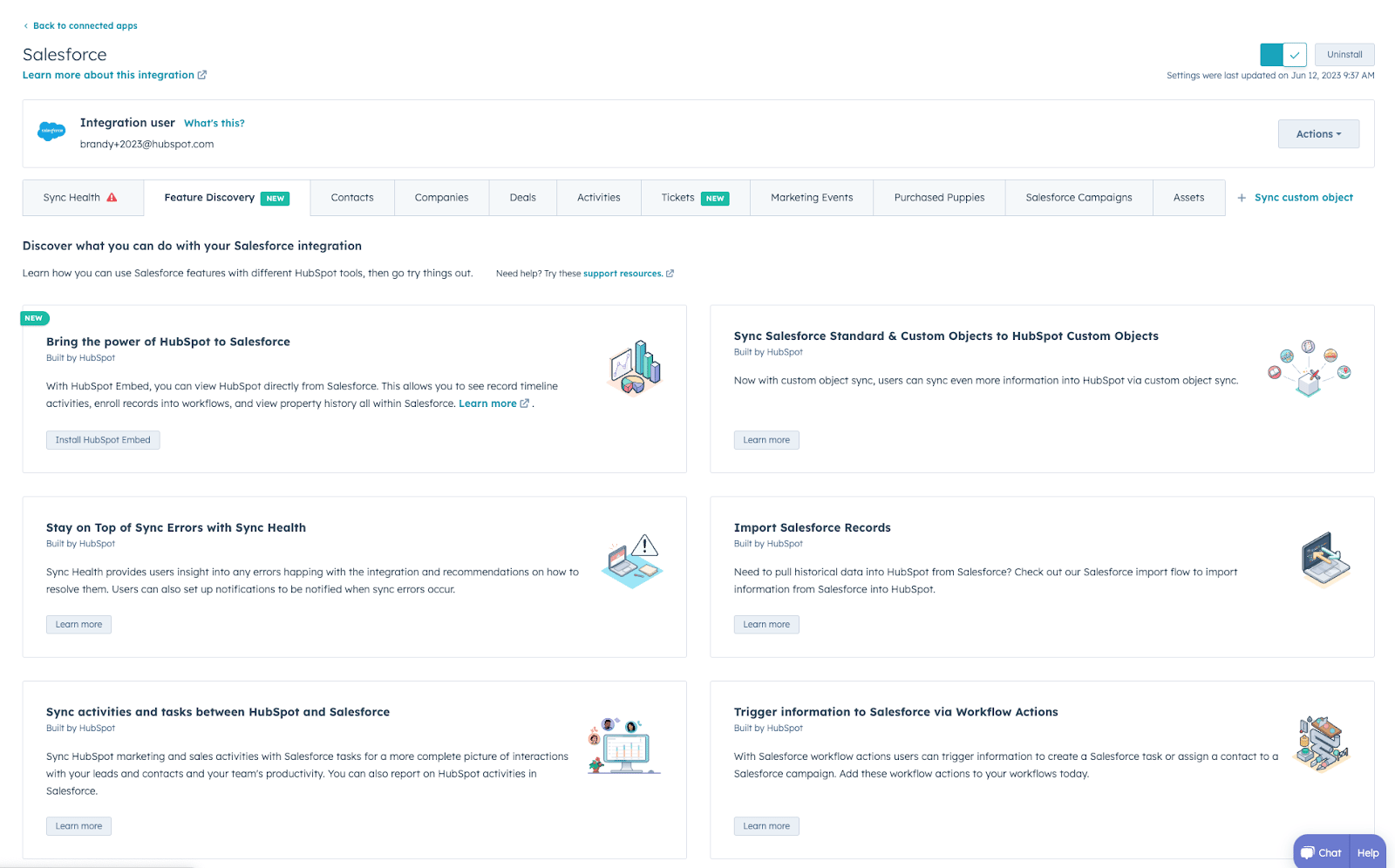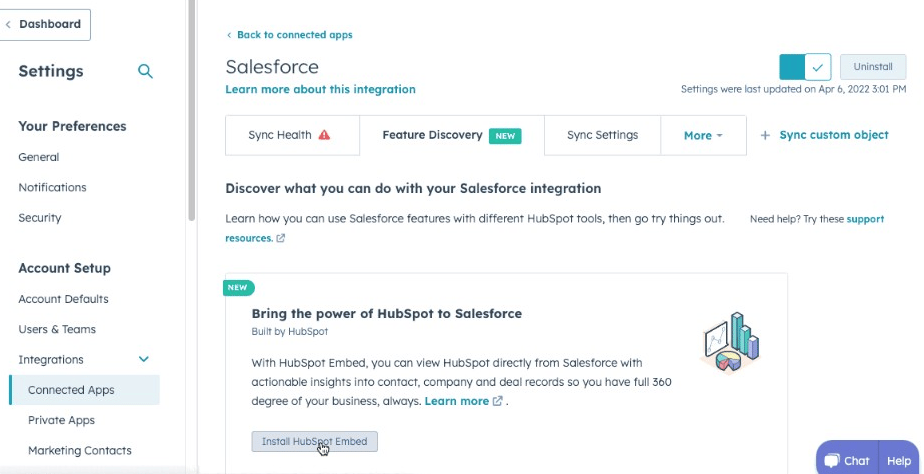Top 5 Common Salesforce HubSpot Integration Issues and Solutions
Top 5 Common Salesforce HubSpot Integration Issues and Solutions
In today's fast-paced business environment, effective customer relationship management (CRM) is essential for driving growth and fostering meaningful connections with customers. Salesforce and HubSpot are two widely used CRM platforms, each offering unique features to help businesses streamline their sales, marketing, and customer service operations. However, integrating these platforms can be fraught with challenges that can impede efficiency and data accuracy.
HubSpot Salesforce Integration with a HubSpot Solutions Partner

Understanding the Importance of Integration

Before delving into the common integration issues and their solutions, let's explore why integrating Salesforce and HubSpot is critical for businesses. Integrating these platforms enables organizations to consolidate customer data, streamline processes, and gain valuable insights into customer behavior. With a unified view of customer interactions across sales and marketing channels, businesses can deliver personalized experiences and drive revenue growth.
Despite the myriad benefits of integrating Salesforce and HubSpot, organizations often encounter roadblocks along the way. From sync errors to data security concerns, navigating through these challenges requires a strategic approach and meticulous attention to detail. In this comprehensive guide, we'll explore the top five common Salesforce HubSpot integration issues and provide actionable solutions to overcome them.
Identifying Common Integration Issues

As businesses seek to enhance their customer interactions and gain a holistic view of their audience, integrating Salesforce and HubSpot has become increasingly popular. This integration allows companies to consolidate customer data, automate processes, and align sales and marketing efforts seamlessly. However, navigating the complexities of integration requires a thorough understanding of common challenges and effective strategies to overcome them.
Here are the 5 most common issues businesses encounter when integrating Salesforce and HubSpot:
Sync Errors Between HubSpot and Salesforce:
Sync errors can occur due to various factors, including network issues, API limitations, or misconfigured integration settings. These errors disrupt the seamless flow of data between HubSpot and Salesforce, leading to inconsistencies and delays in information updates. To mitigate sync errors, conduct a thorough review of integration settings, ensuring proper configuration and adherence to API limits. Implement robust error handling mechanisms to detect and address sync errors promptly, minimizing their impact on data integrity.
Field Mapping Discrepancies
Field mapping discrepancies often arise when data fields in HubSpot and Salesforce are not aligned correctly. This misalignment can result in data inconsistencies and hinder effective communication between sales and marketing teams. To address this issue, meticulously map data fields between the two platforms during the integration setup process. Regularly audit field mappings to ensure they align with business requirements and accommodate any changes or updates. Utilize automation tools to streamline the field mapping process and maintain data accuracy across systems.
Troubleshooting Reporting Discrepancies
Reporting discrepancies between HubSpot and Salesforce can stem from differences in data synchronization, reporting methodologies, or data interpretation practices. These discrepancies undermine the reliability of reports and hinder informed decision-making. To troubleshoot reporting discrepancies effectively, compare data across both platforms and identify inconsistencies. Validate data sync processes and ensure data mapping and transformation are accurate and consistent. Establish clear reporting standards and guidelines to promote consistency and transparency in reporting practices.
Integration Workflow Automation Challenges
Automating workflows between HubSpot and Salesforce is essential for optimizing business processes and maximizing productivity. However, integration workflow automation can present challenges, such as complex logic or compatibility issues between platforms. To overcome these challenges, simplify integration workflows by breaking them down into smaller, manageable tasks. Leverage automation tools and features offered by both platforms to streamline workflow processes and minimize manual intervention. Continuously test and refine integration workflows to ensure smooth operation and alignment with business objectives.
Data Security and Privacy Concerns
Maintaining data security and privacy is paramount when integrating Salesforce and HubSpot, given the sensitive nature of customer information. Failure to address these concerns can result in data breaches, compliance violations, and reputational damage. To enhance data security and privacy, encrypt sensitive data during transmission and storage, and implement access controls based on user roles and permissions. Conduct regular audits to identify and mitigate potential security vulnerabilities or breaches. Stay abreast of industry regulations and compliance requirements to ensure adherence to data protection standards.
Addressing Integration Challenges
1. Regularly review integration settings and monitor API usage to identify and address sync errors promptly.
2. Conduct thorough field mapping between HubSpot and Salesforce during the integration setup process and regularly audit field mappings to ensure alignment with business requirements.
3. Validate data synchronization processes and establish clear reporting standards to promote consistency in reporting practices.
4. Simplify integration workflows and leverage automation tools to streamline processes and minimize manual intervention.
5. Implement robust security measures, including data encryption and access controls, to protect sensitive customer information.
Conclusion
Integrating Salesforce and HubSpot offers numerous benefits for businesses, but it's essential to address common integration issues effectively. By understanding the importance of integration, identifying common challenges, and implementing proactive solutions, organizations can optimize their CRM integration and drive sustainable growth.



